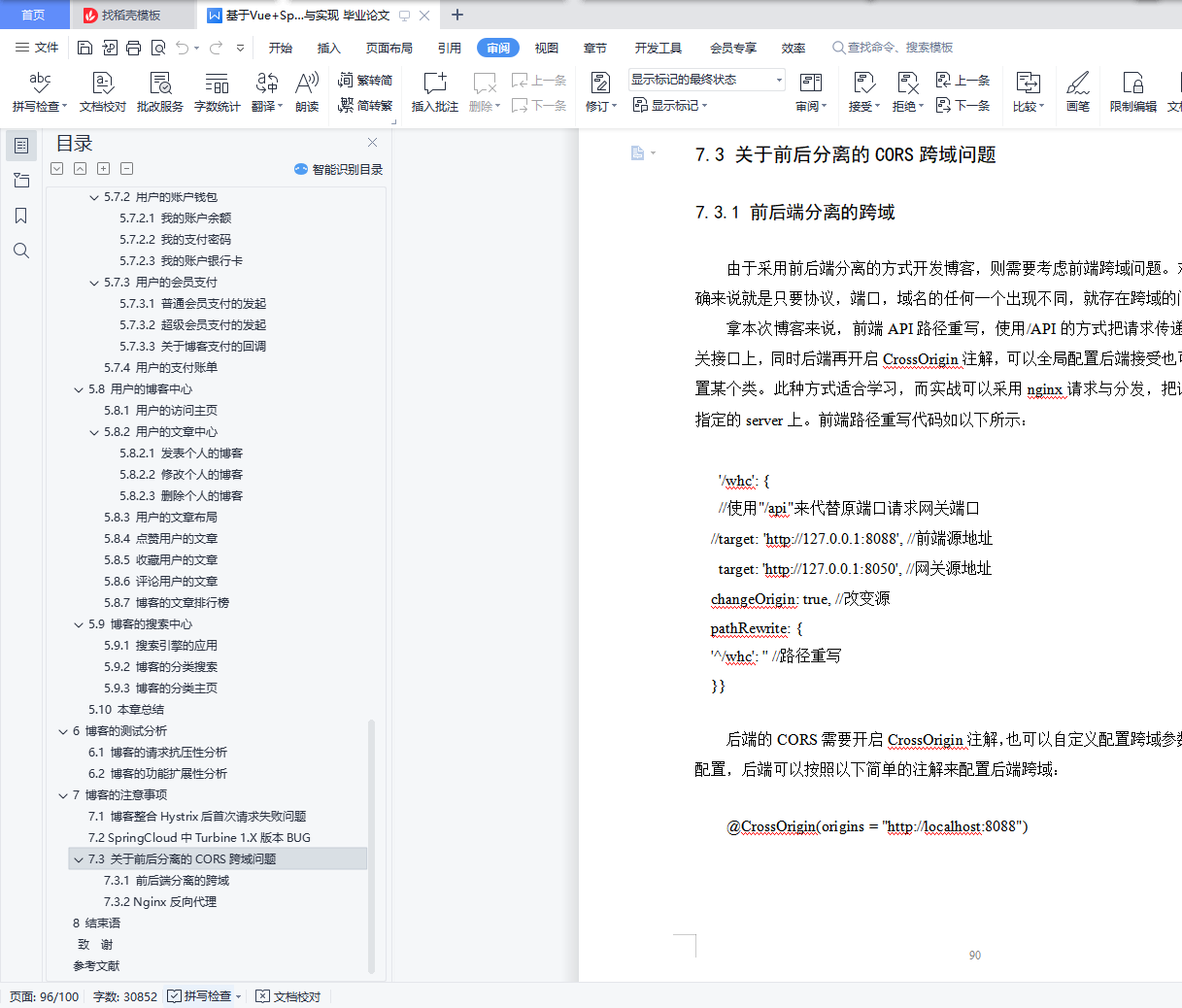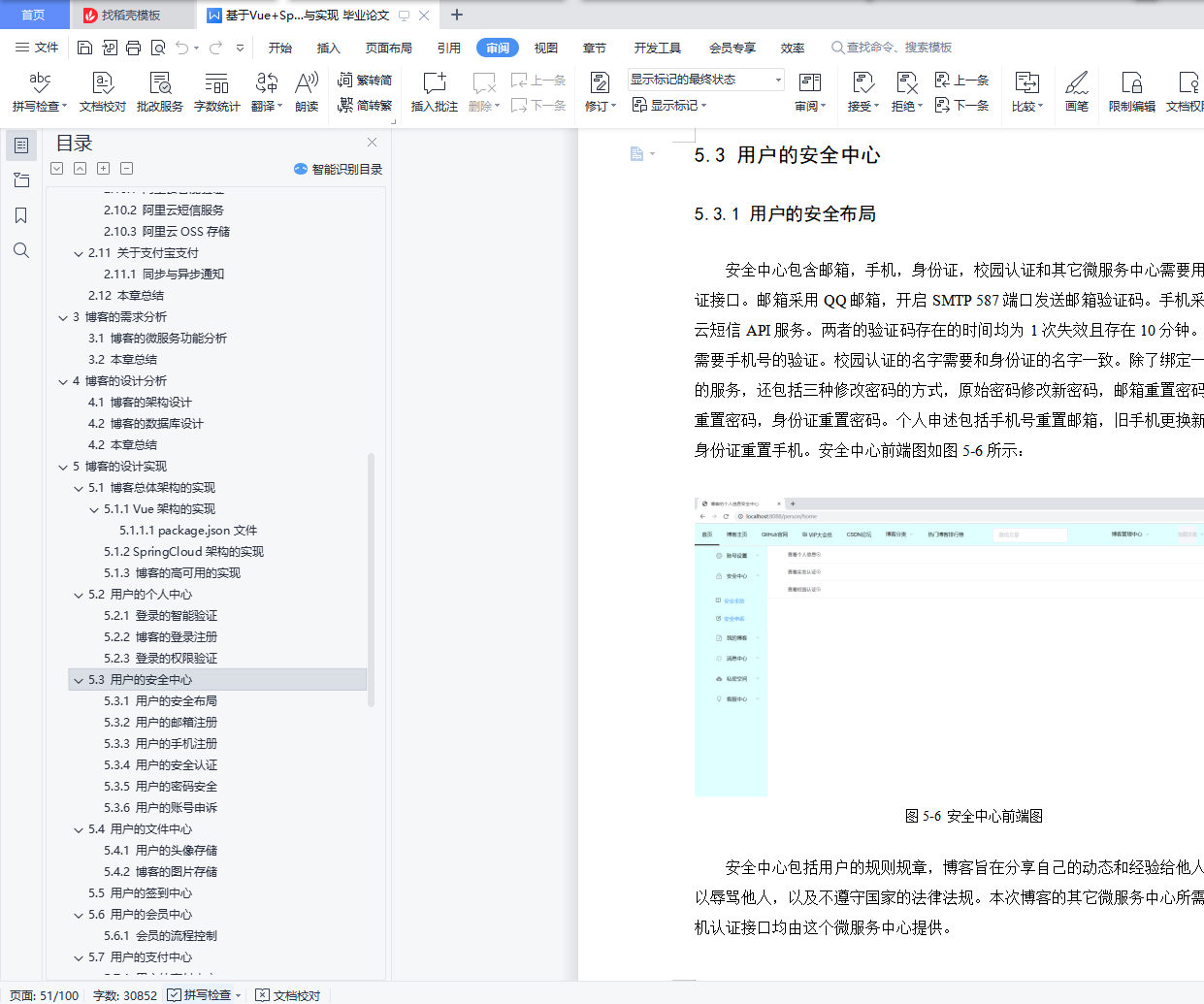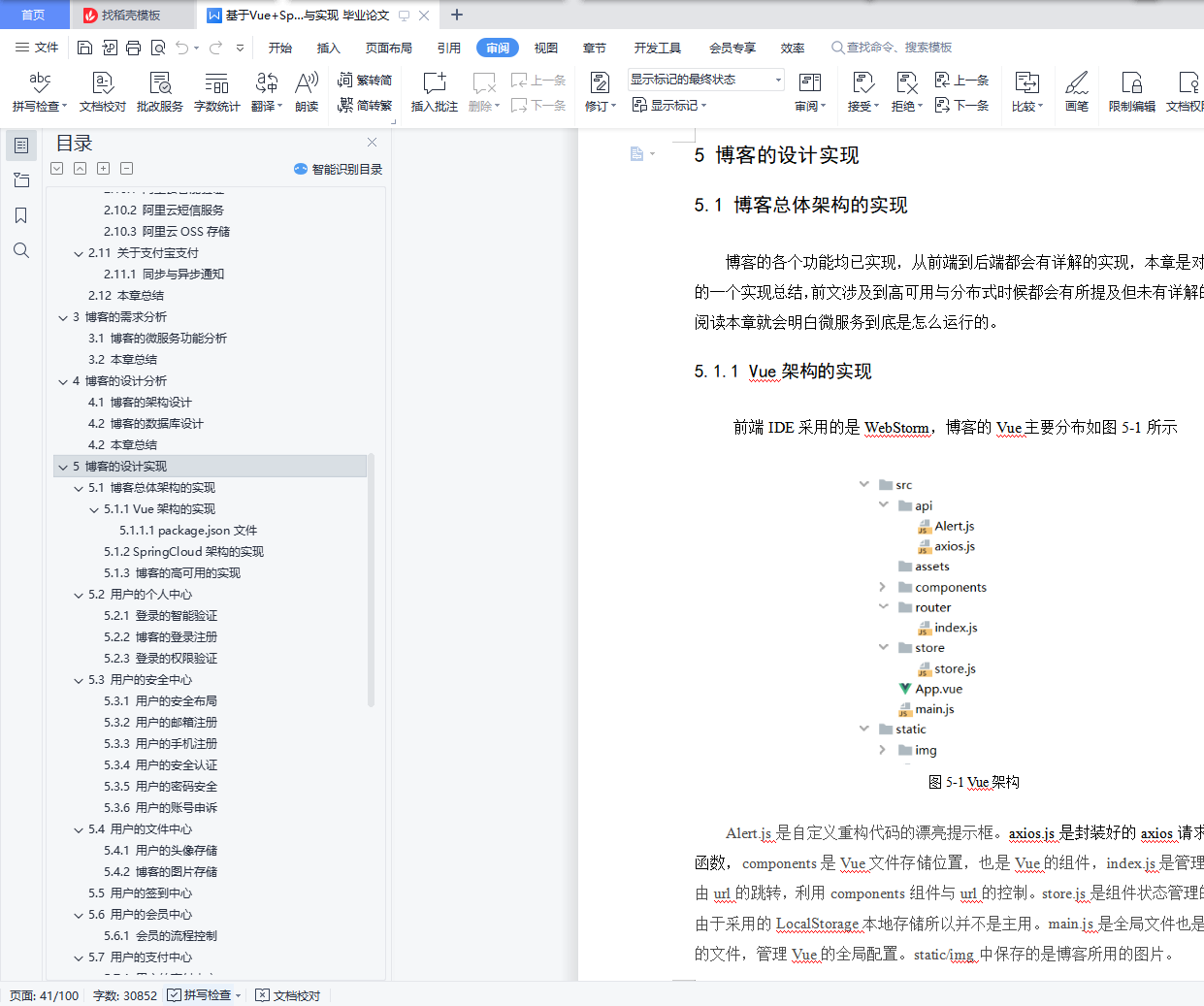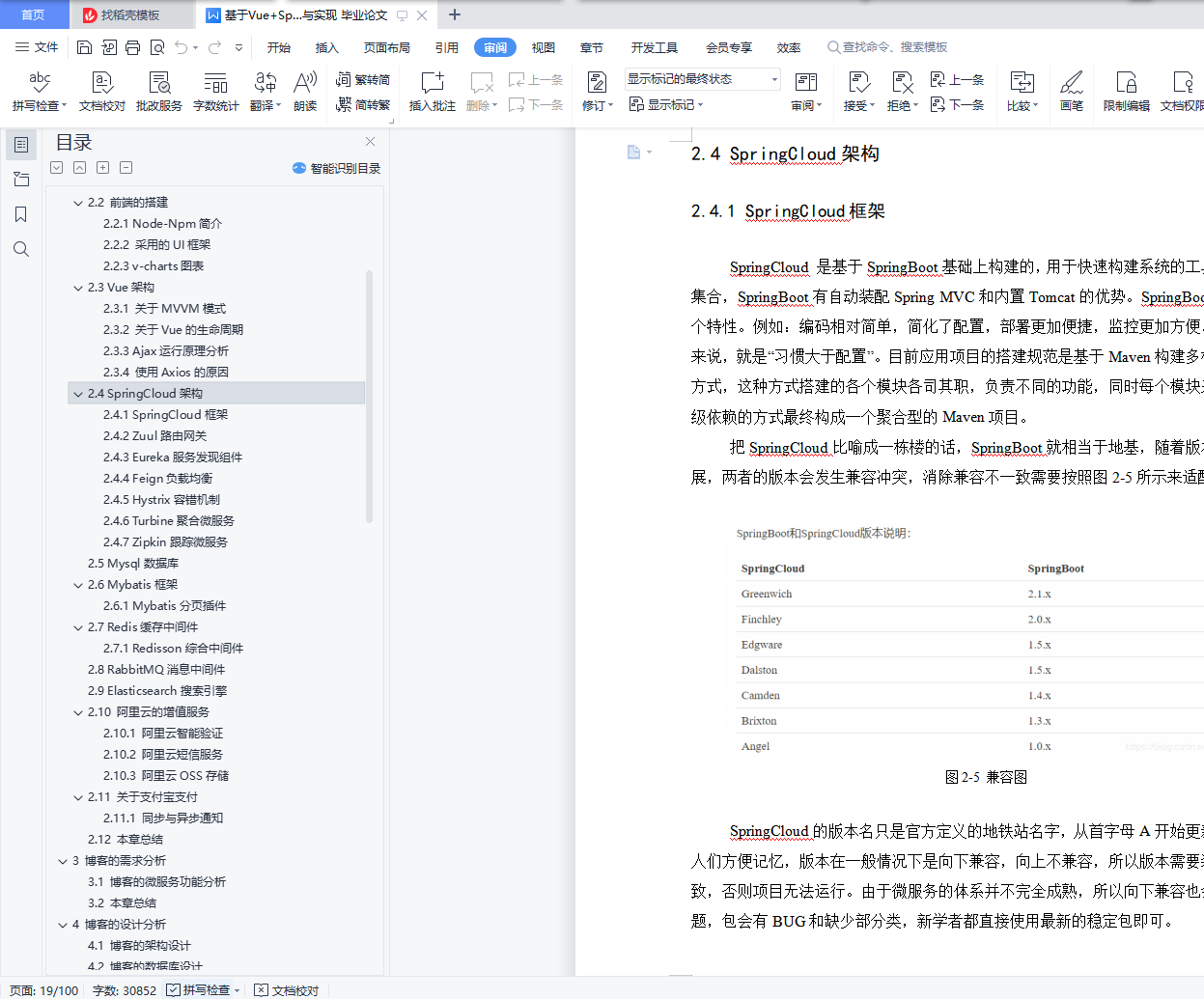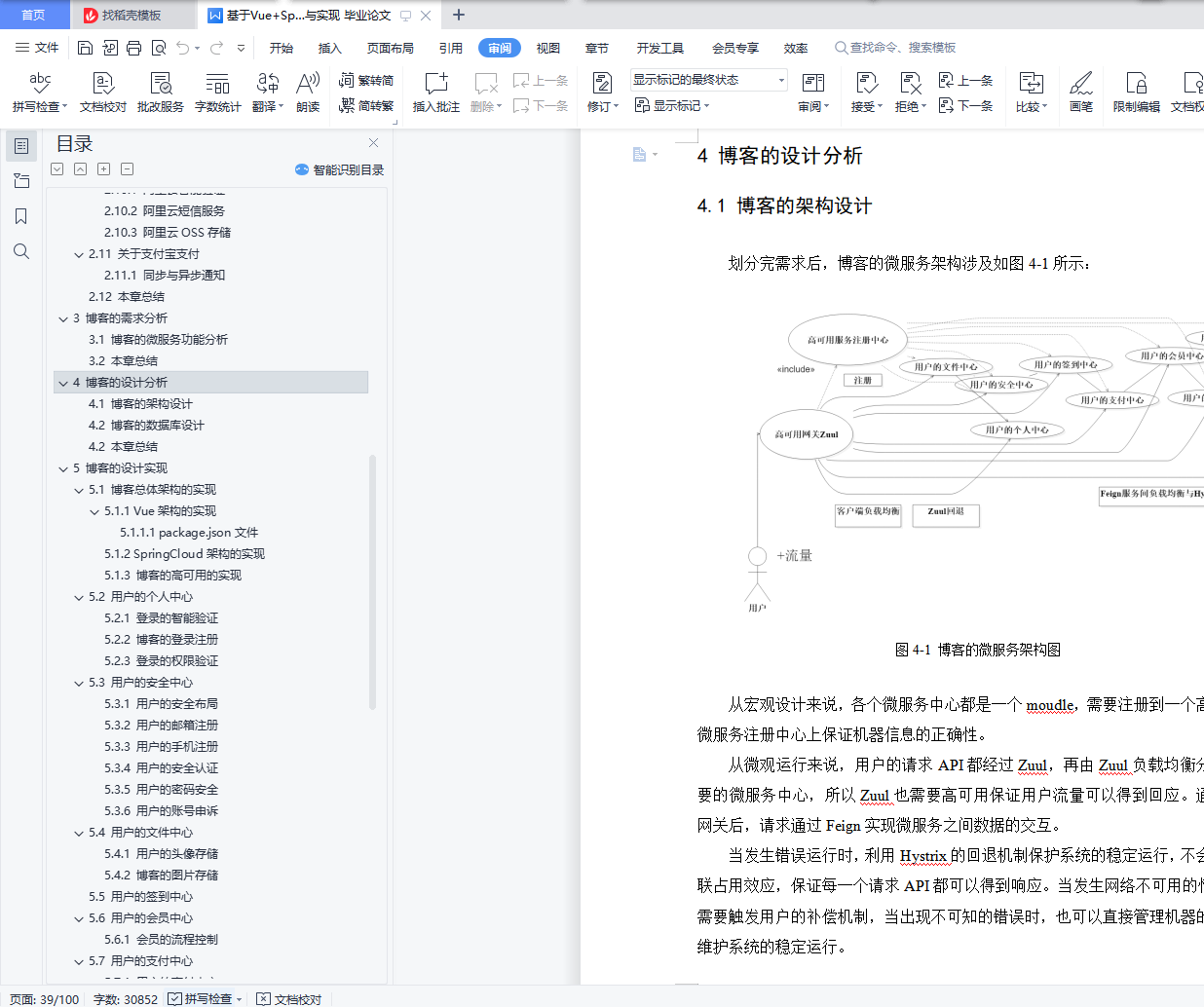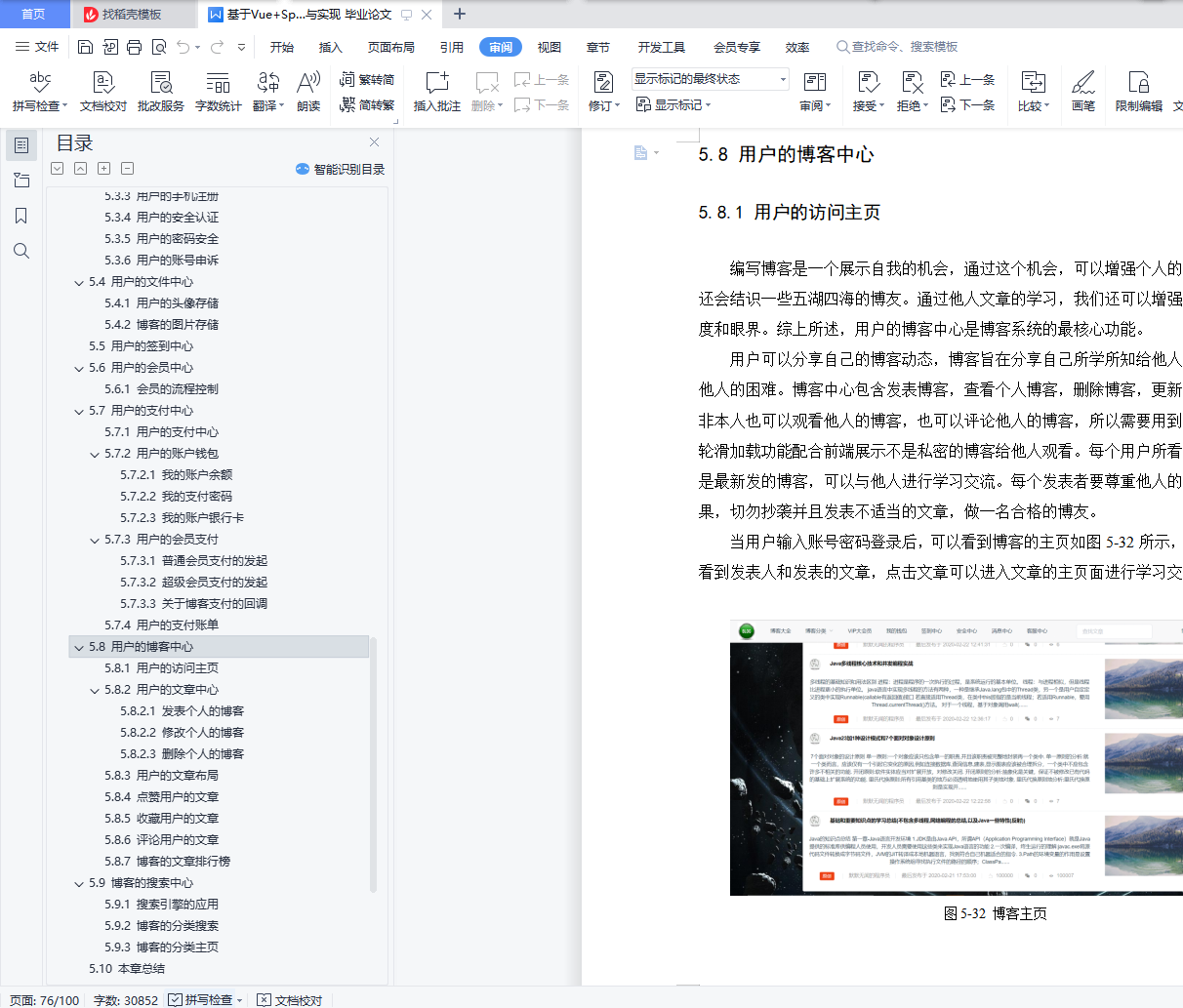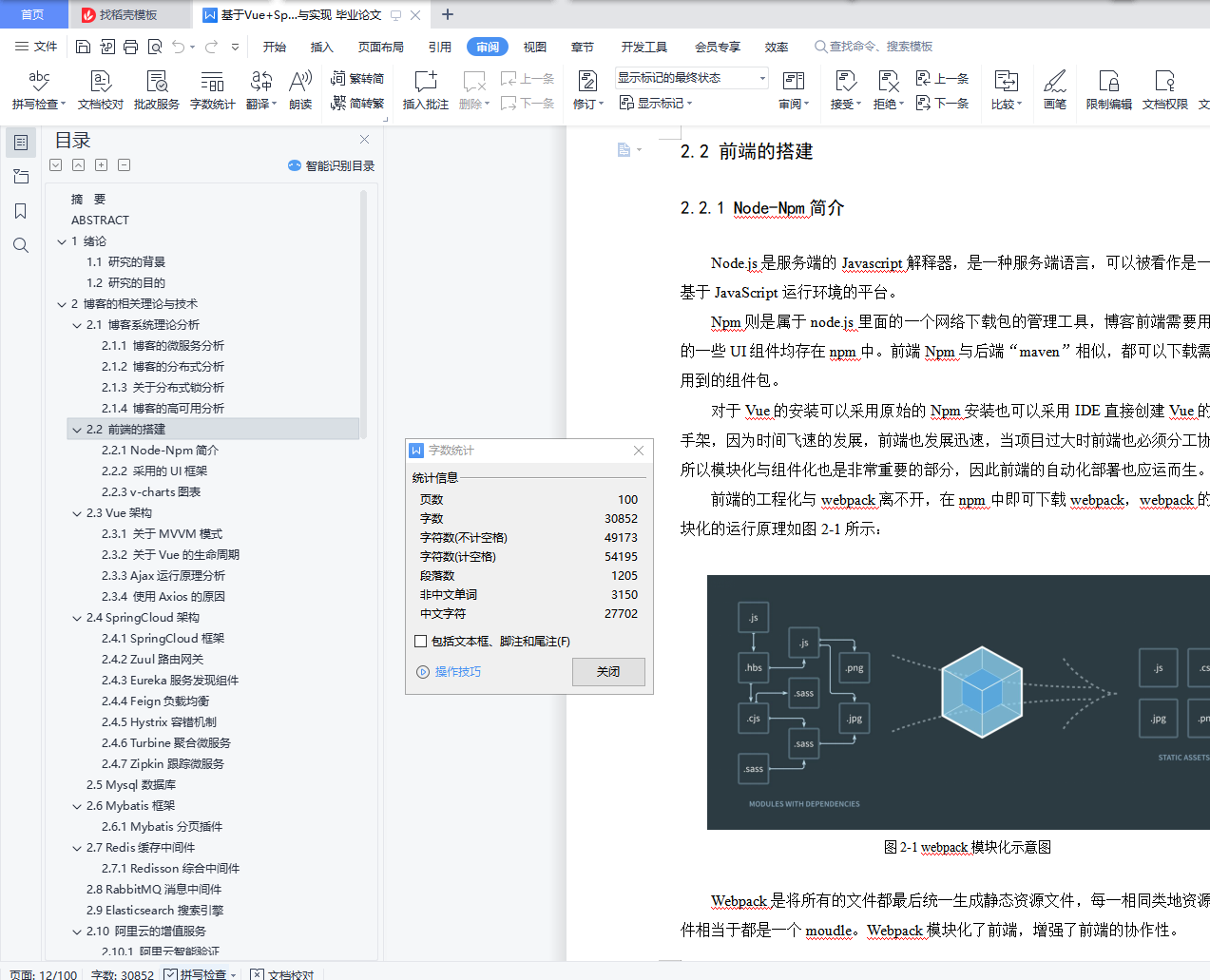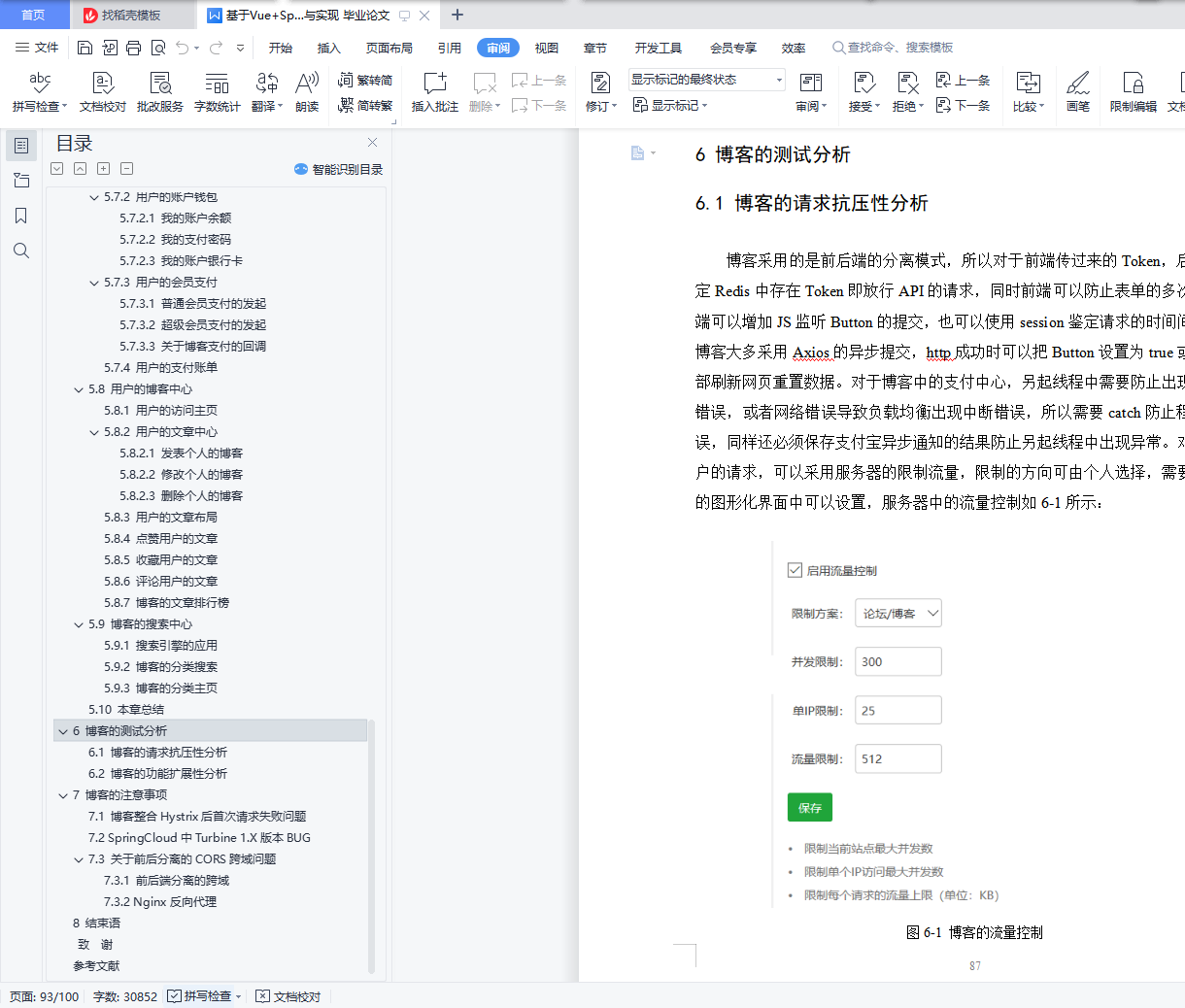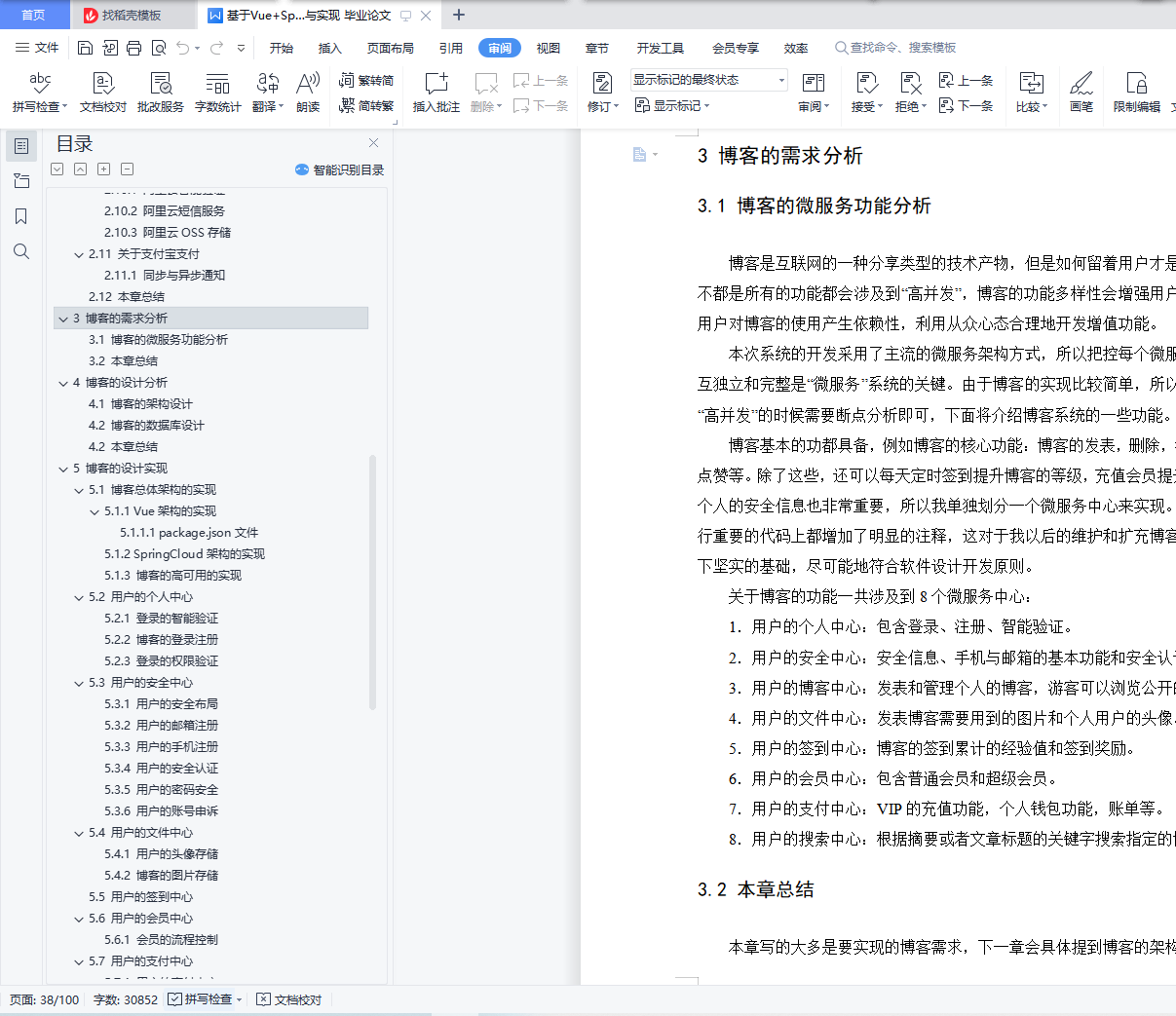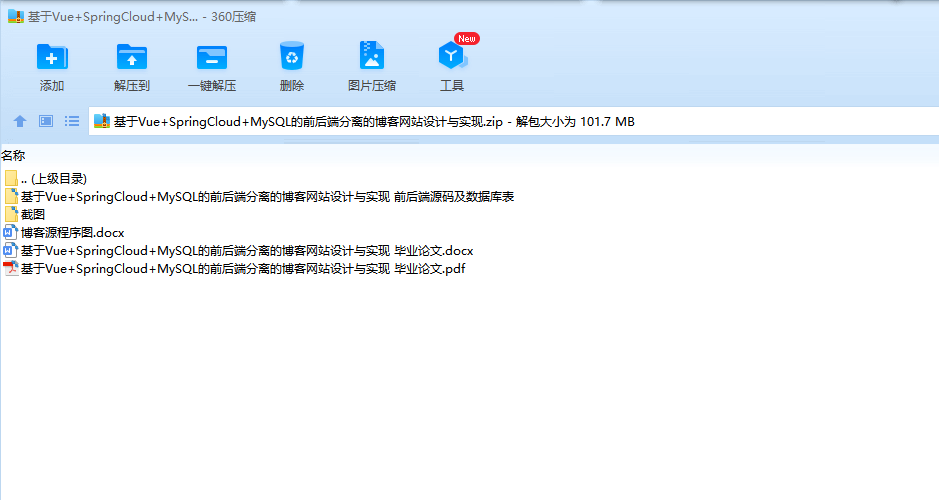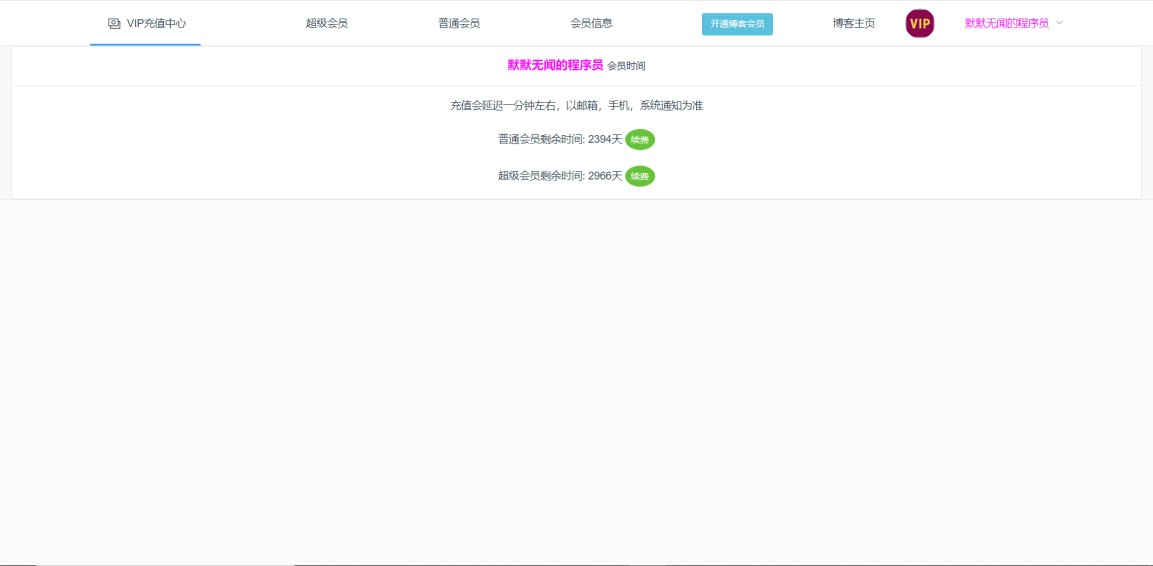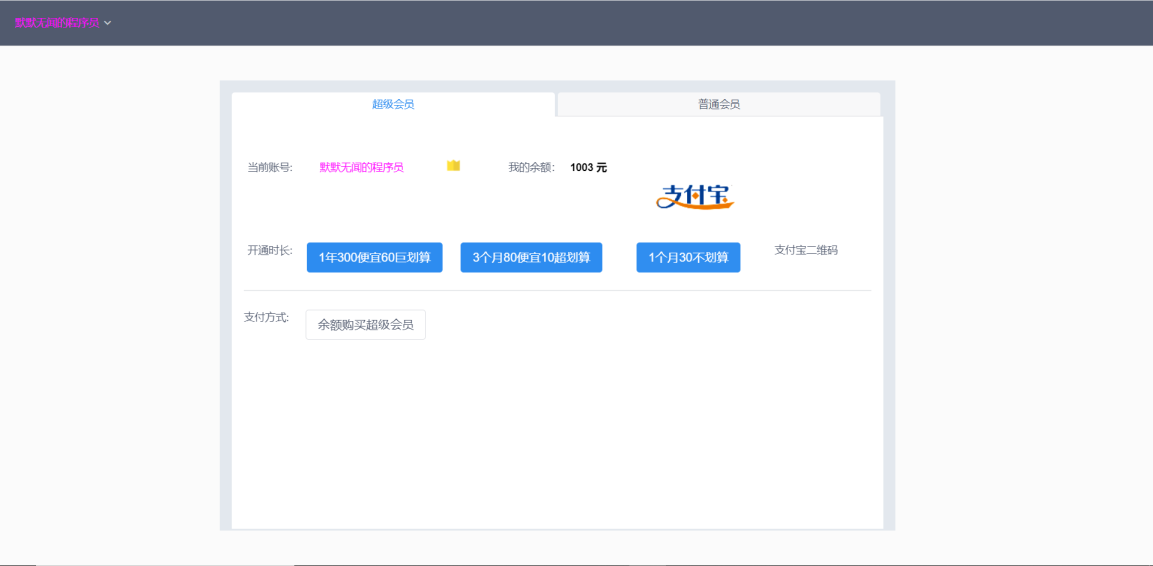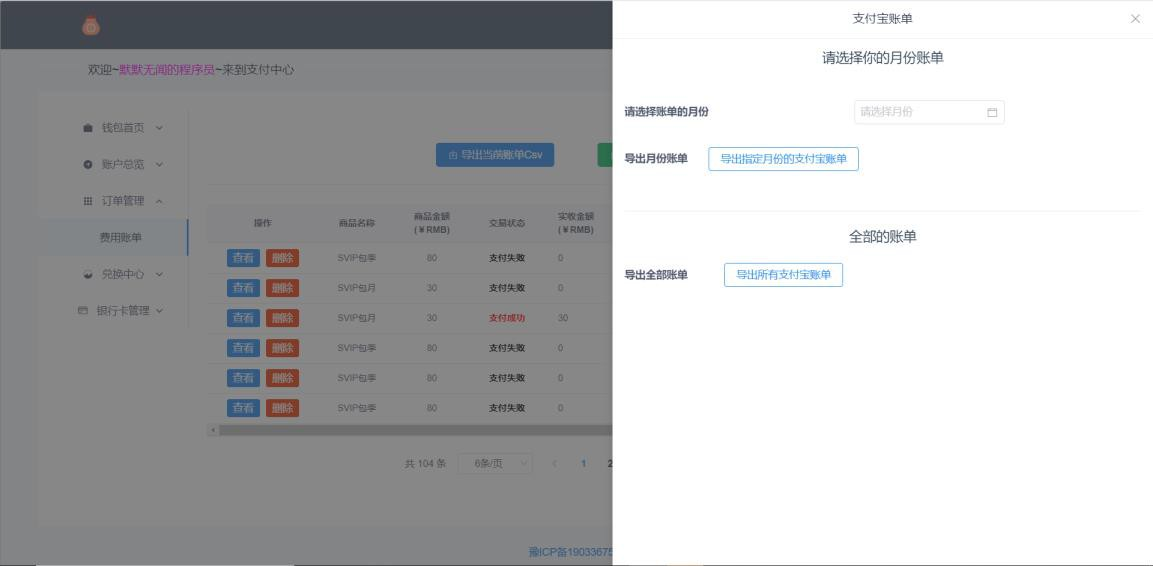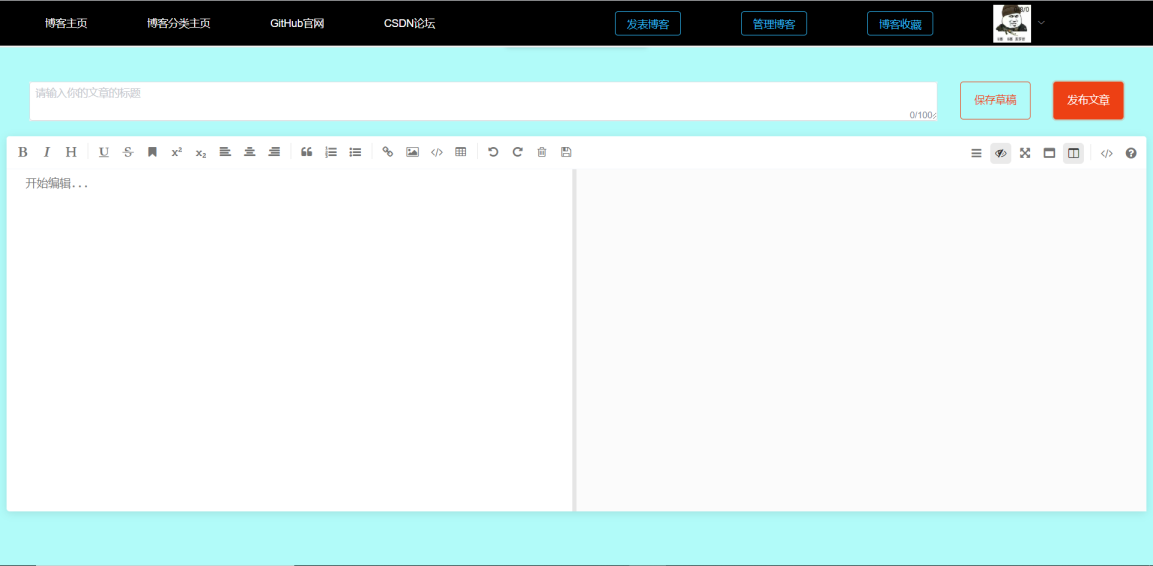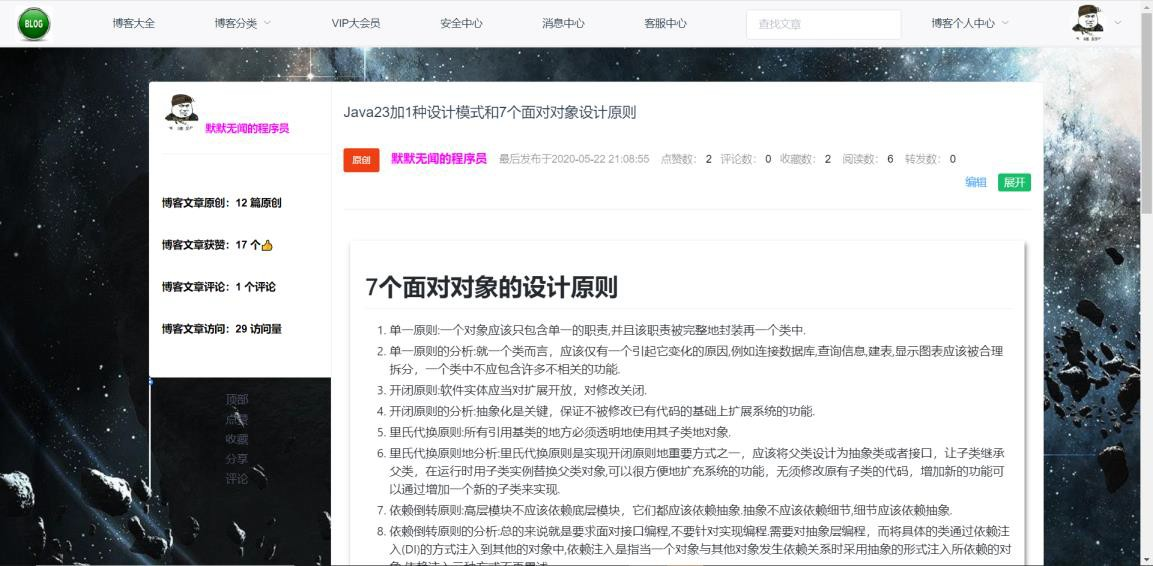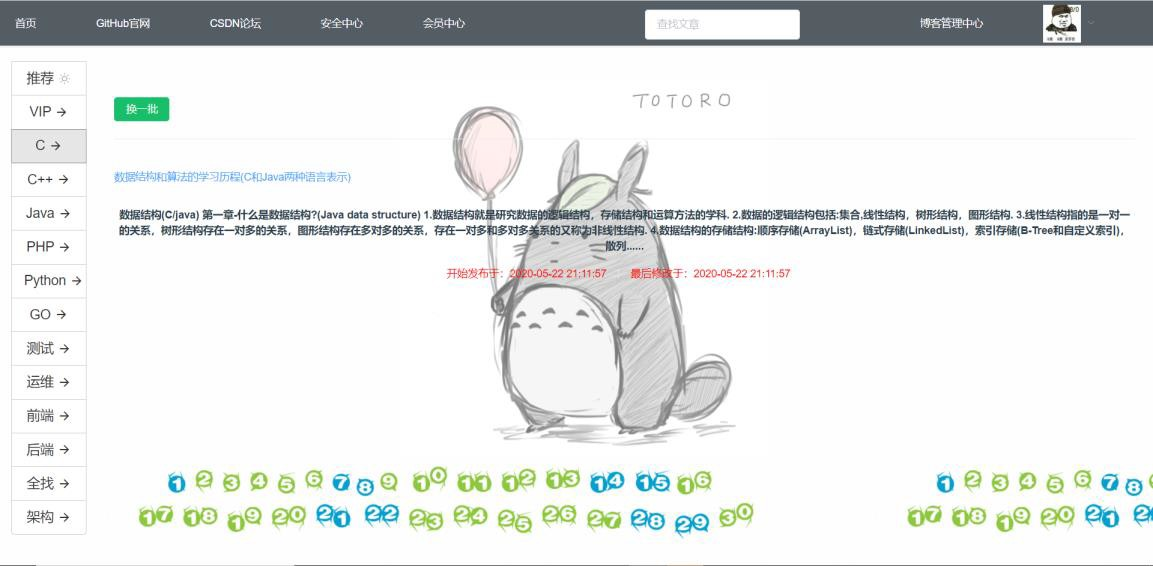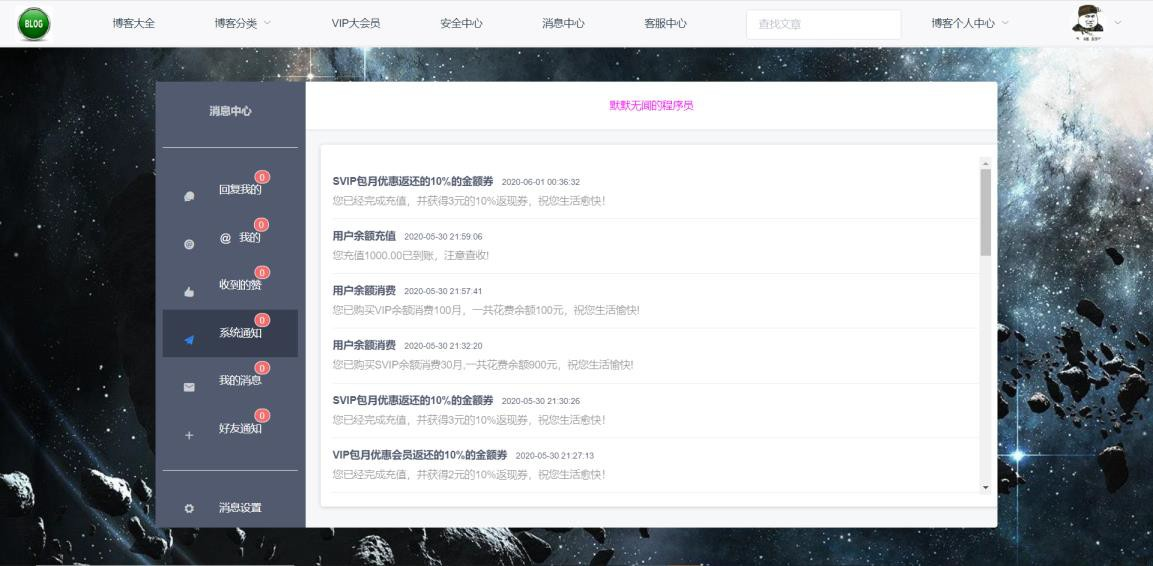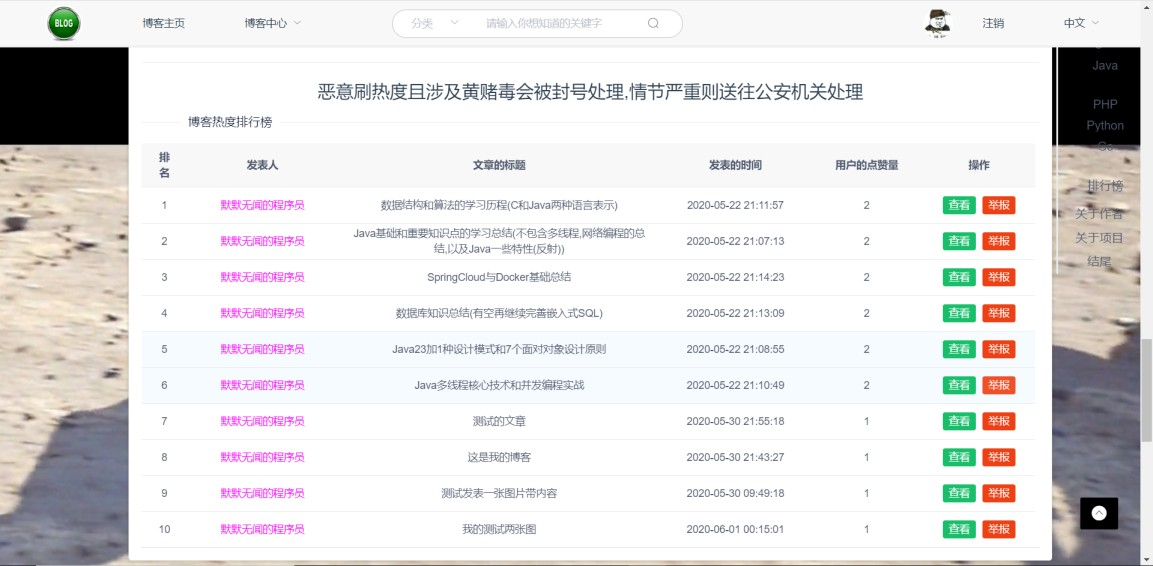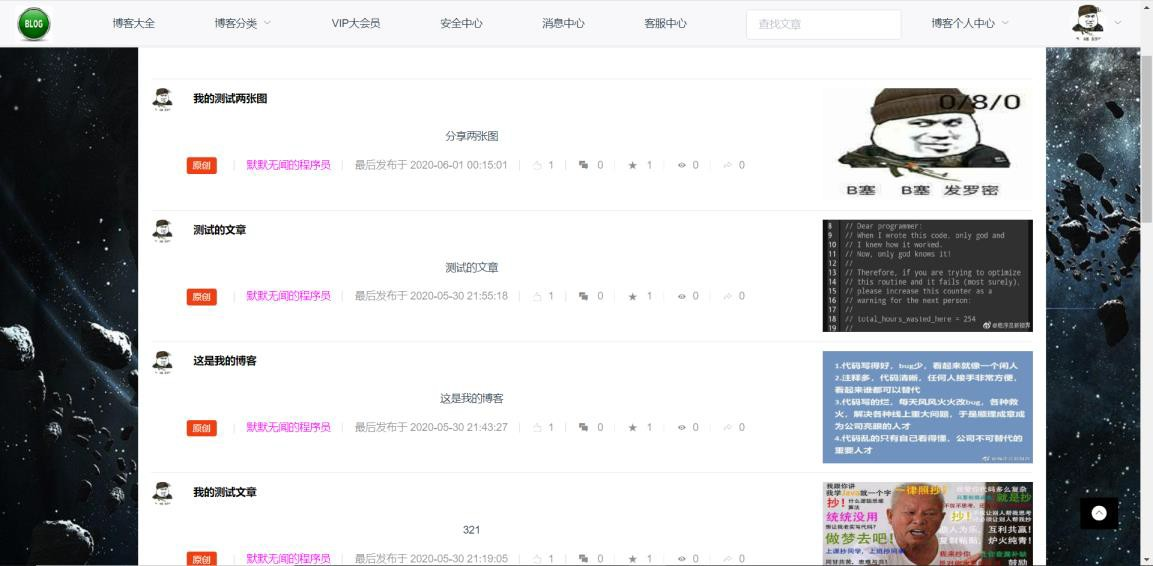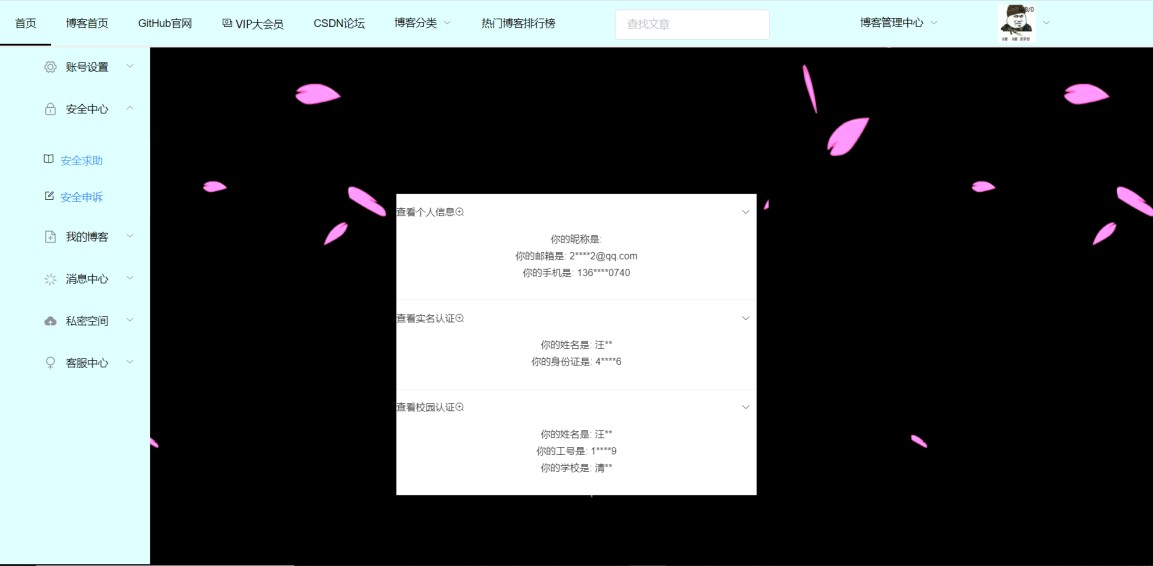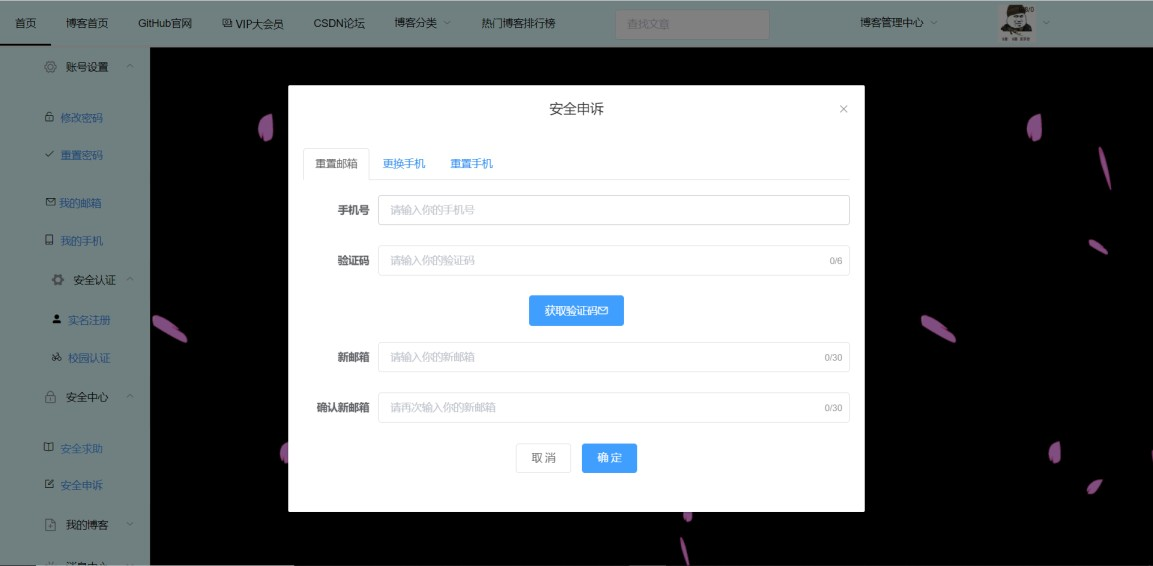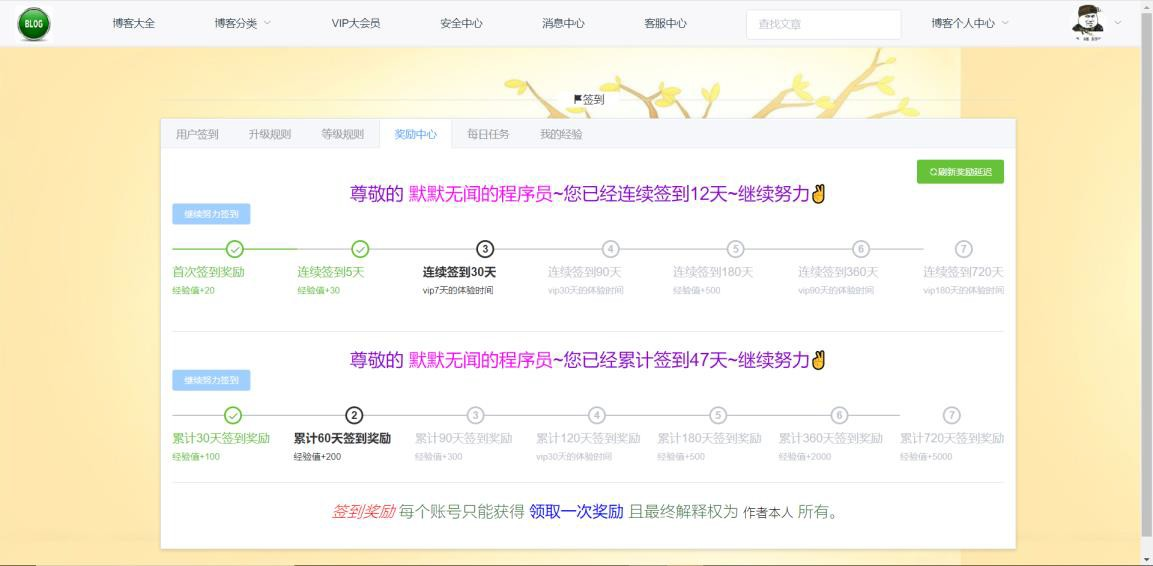基于Vue+SpringCloud+MySQL的前后端分离的博客网站设计与实现 毕业论文+前后端源码及数据库表
基于Vue+SpringCloud博客的设计与实现
摘 要
博客是用来分享自己的心情和动态拉近人与人之间的距离,它改变了人们的在网上的交流方式,也增强了互联网的趣味性。 “微服务”是最近两年开始流行起来,但是其实早在20年前都有专家提出过,只不过当时的用户量并不像现在那么高。例如:一个系统的功能越丰富就会导致技术债务越多,但是基于单体应用(一个war包)开发的代码库越来越臃肿,可维护性差,代码“不坏不修”。为此,引入“微服务”架构的方式可以改善这个状况,每个微服务中心均在独立的进程中负责每种功能的业务,由一系列独立运行的微服务中心共同构建整个系统。现在web的前后端分离是企业的一种趋势,前后端分离同样也是技术创新的一种体现。得益于开发分离的趋势,Vue与SpringCloud的组合方式在如今的Web网站开发中占据重要的位置。
关键字: 微服务,Vue,SpringCloud.
Design and implementation of blog based on Vue + spring cloud
ABSTRACT
Blog is used to share their feelings and dynamically close the distance between people. It changes the way people communicate on the Internet, and also enhances the interest of the Internet. "Micro service" has become popular in the past two years, but in fact, it was proposed by experts as early as 20 years ago, but the user volume at that time was not as high as it is now. For example, the more functions a system has, the more technical debts it will incur. However, the code base developed based on single application (a war package) is becoming more and more bloated, with poor maintainability and "no damage, no repair" of the code. Therefore, the introduction of "micro service" architecture can improve this situation. Each micro service center is responsible for the business of each function in an independent process, and a series of independent micro service centers jointly build the whole system. Nowadays, the separation of front end and back end of web is a trend of enterprises, and the separation of front end and back end is also a reflection of technological innovation. Thanks to the trend of development separation, the combination of Vue and spring cloud occupies an important position in today's Web site development.
KEY WORDS: Micro service,Vue,SpringCloud.
目 录
7.2 SpringCloud中Turbine 1.X版本BUG
